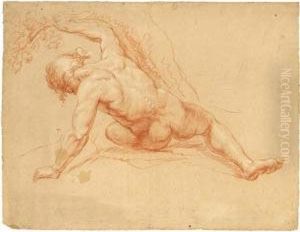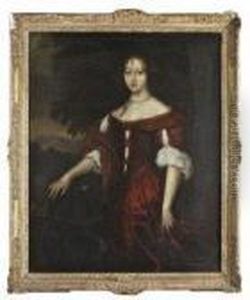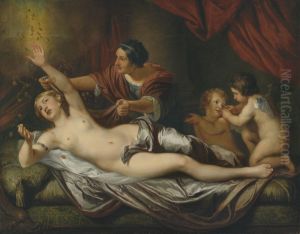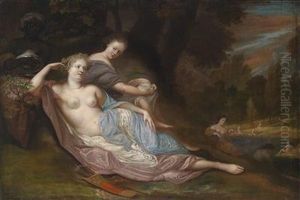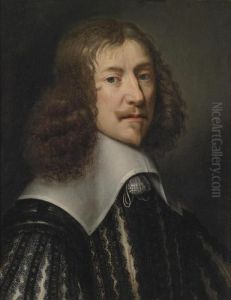Daniel Ii Mytens Paintings
Daniel Mytens II, also known as Daniël Mijtens the Younger, was a Dutch portrait painter who played a significant role in the early 17th-century English court. Born around 1590 in The Hague, Netherlands, into a family of artists, Mytens followed in the footsteps of his father, Daniël Mijtens the Elder, who was also a prominent painter. The younger Mytens is often confused with his father due to their shared profession and similar names, but he carved out his own niche in the realm of portrait painting.
Mytens moved to England in the early 1620s, during the reign of King James I. His arrival coincided with a flourishing interest in the arts among the English nobility, and Mytens quickly established himself as a court painter. His ability to capture the elegance and opulence of his subjects made him a favorite among the aristocracy. His style was characterized by a meticulous attention to detail, particularly in the rendering of fabrics and jewels, which added a sense of grandeur to his portraits.
In England, Mytens's work was instrumental in developing the Stuart court's visual identity. He painted numerous portraits of King James I, as well as his successor, Charles I, and their respective families. These works not only served as personal mementos but also as tools of political propaganda, emphasizing the power, divine right to rule, and cultured sophistication of the monarchy. Mytens's portraits are notable for their refined elegance, capturing the poise and dignity of his sitters with a sophisticated use of color and light.
Despite his success, Mytens's prominence at the English court faced competition from the rising star of Anthony van Dyck, another Flemish artist who arrived in England in the 1630s. Van Dyck’s arrival marked a shift in royal patronage, and his style, which was considered more modern and emotive, eventually eclipsed Mytens's work. This led to Mytens returning to The Hague around 1634, where he continued to paint until his death in 1647.
Mytens's legacy is preserved in several important collections, including the National Portrait Gallery in London and the Rijksmuseum in Amsterdam. His portraits remain a valuable source of information on the fashion, culture, and politics of the early 17th-century English court. Despite being overshadowed by Van Dyck in later years, Mytens's contribution to the development of portrait painting in England and his influence on the visual culture of the Stuart monarchy are undeniable.
